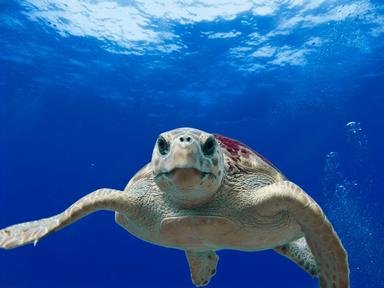Quiz Answer Key and Fun Facts
1. Largest turtle (including marine or freshwater species)
2. Largest freshwater turtle (and among the most dangerous)
3. Largest species of tortoise (and largest chelonian); once represented by Lonesome George
4. Smallest tortoise, and smallest of the chelonians
5. Smallest freshwater turtle (and smallest of all turtles)
6. Smallest sea turtle, and the most abundant
7. Largest mainland (as opposed to island) tortoise
8. Adwaita, the oldest recorded chelonian in history, was one of this island subspecies
9. The most expensive turtle in the first decade of the 21st century (and one of the prettiest); found in mainland Asia
10. Probably the ugliest and weirdest turtle, with a leaf-shaped head; found in South America
Source: Author
gracious1
This quiz was reviewed by FunTrivia editor
rossian before going online.
Any errors found in FunTrivia content are routinely corrected through our feedback system.
